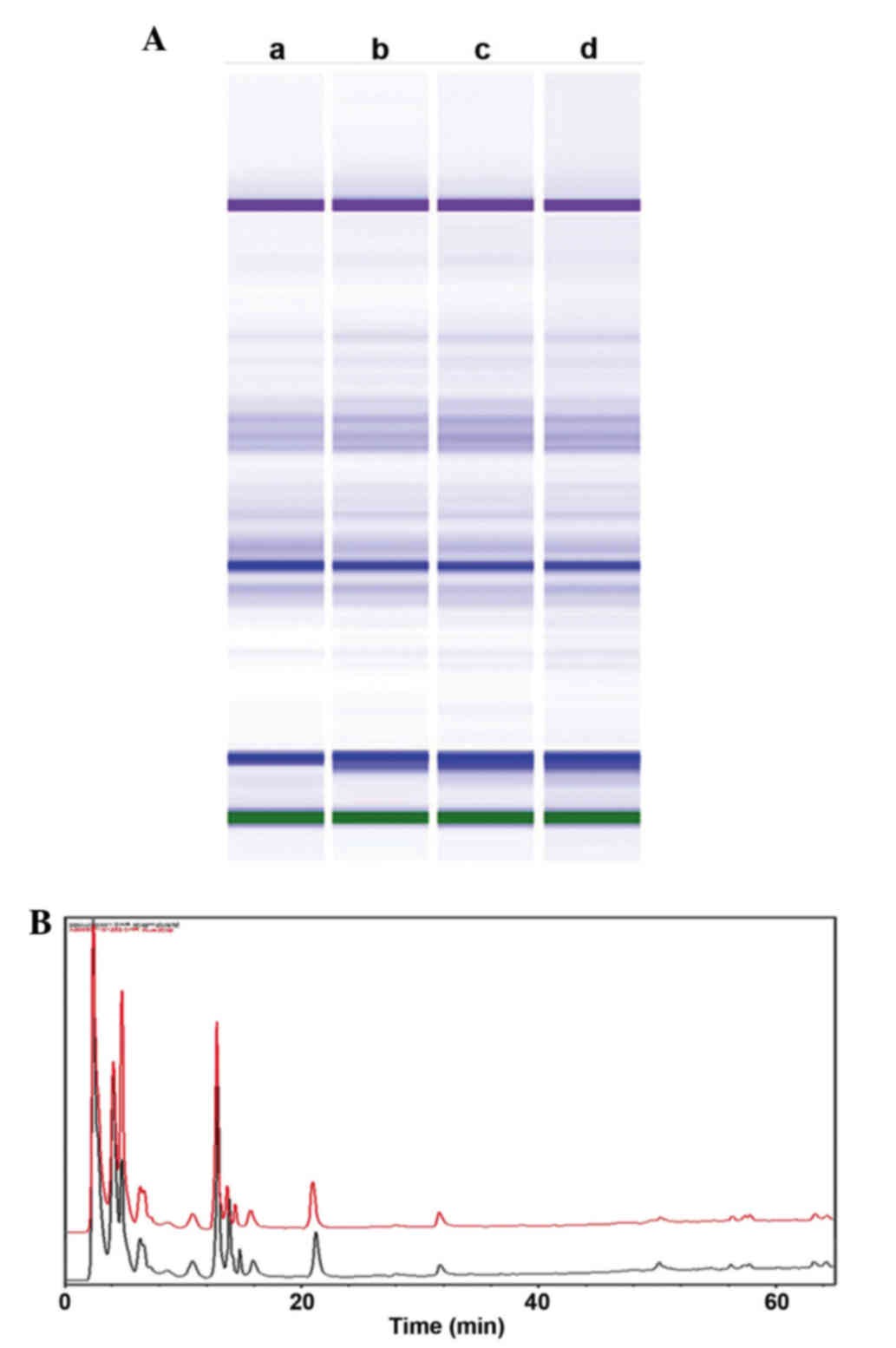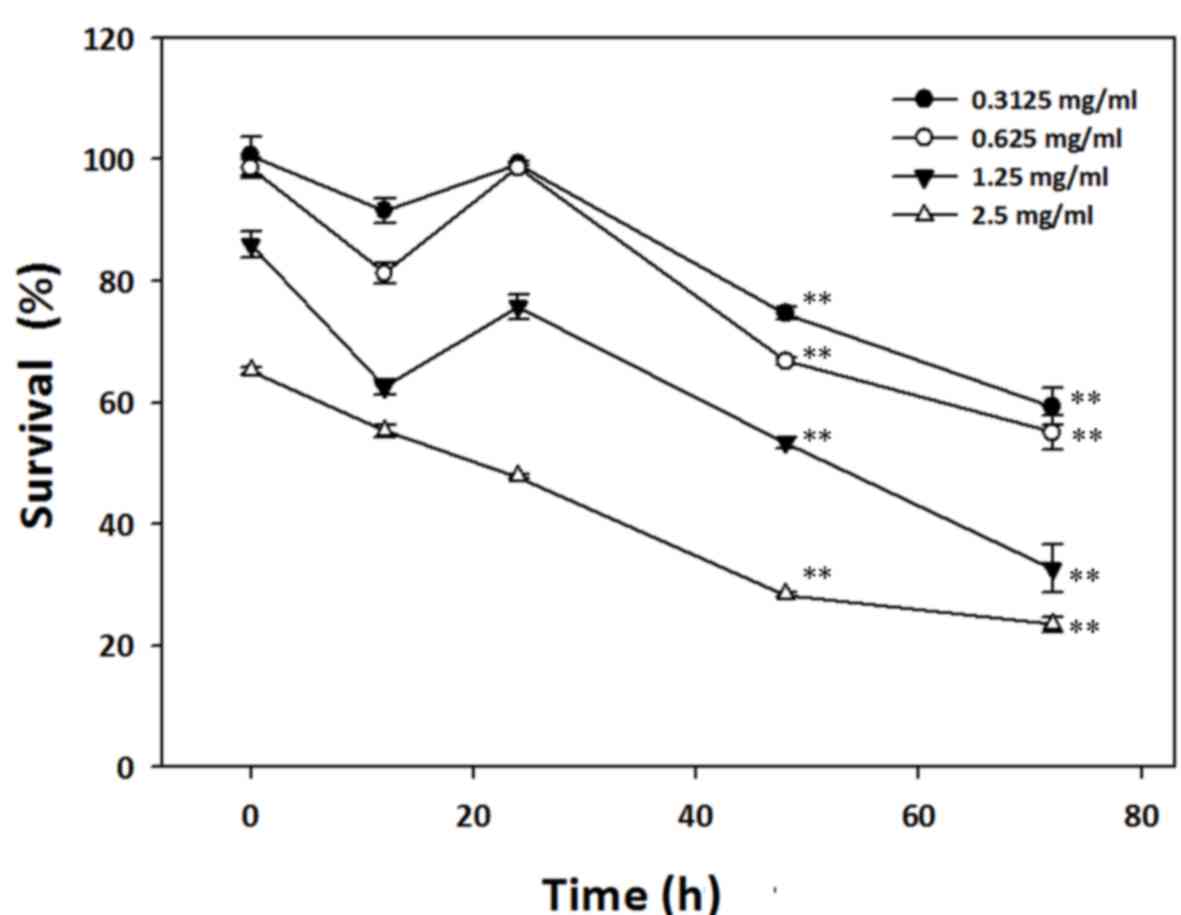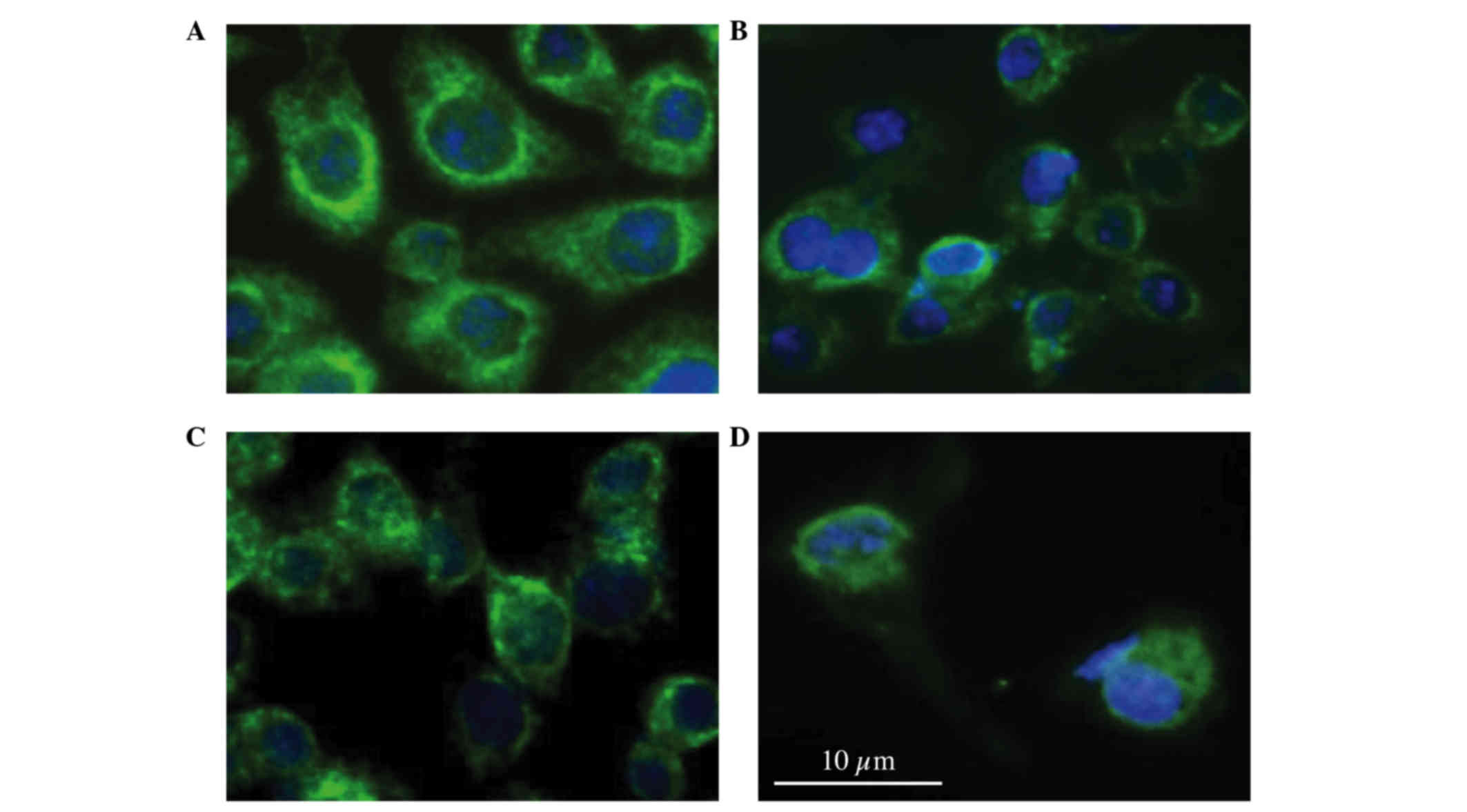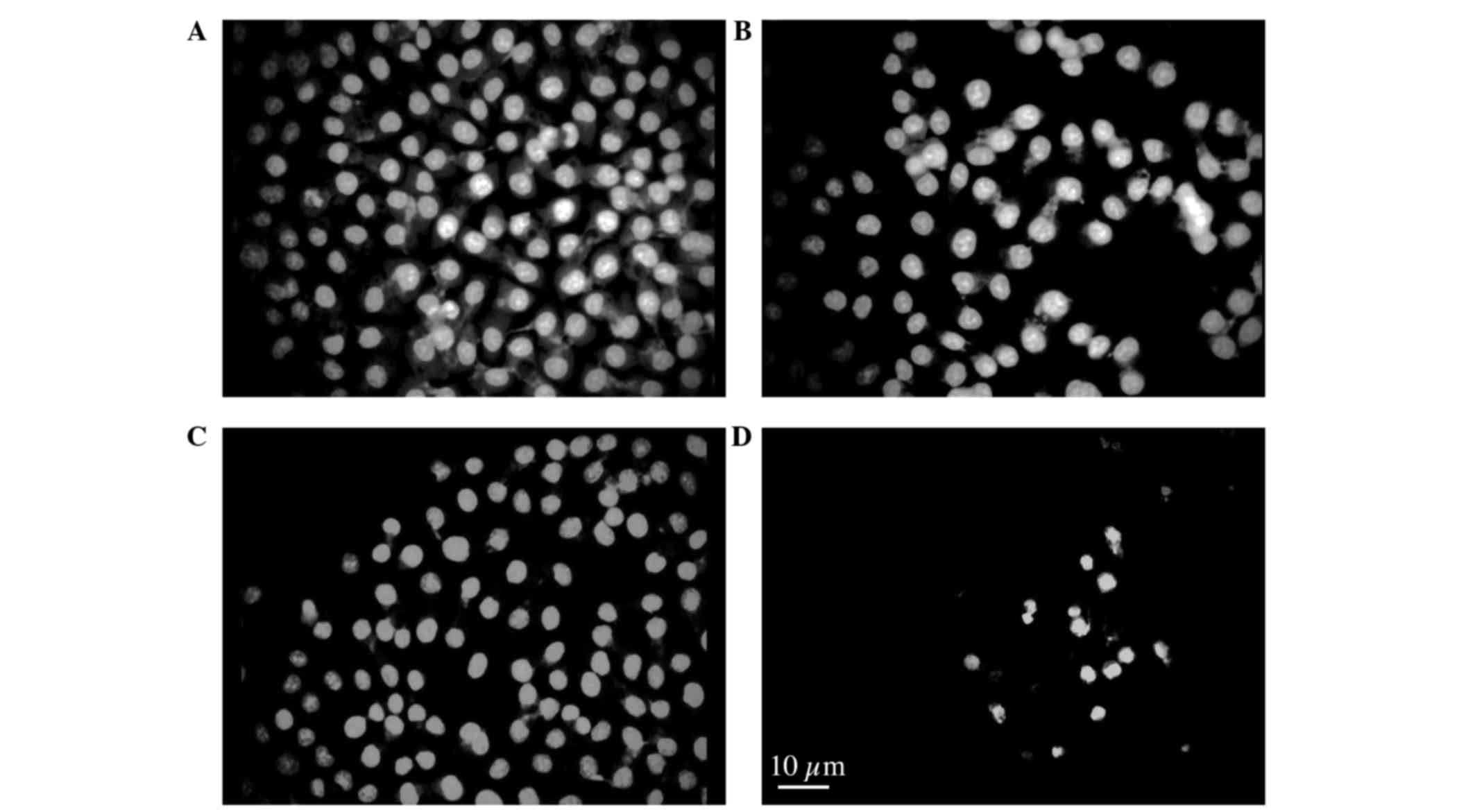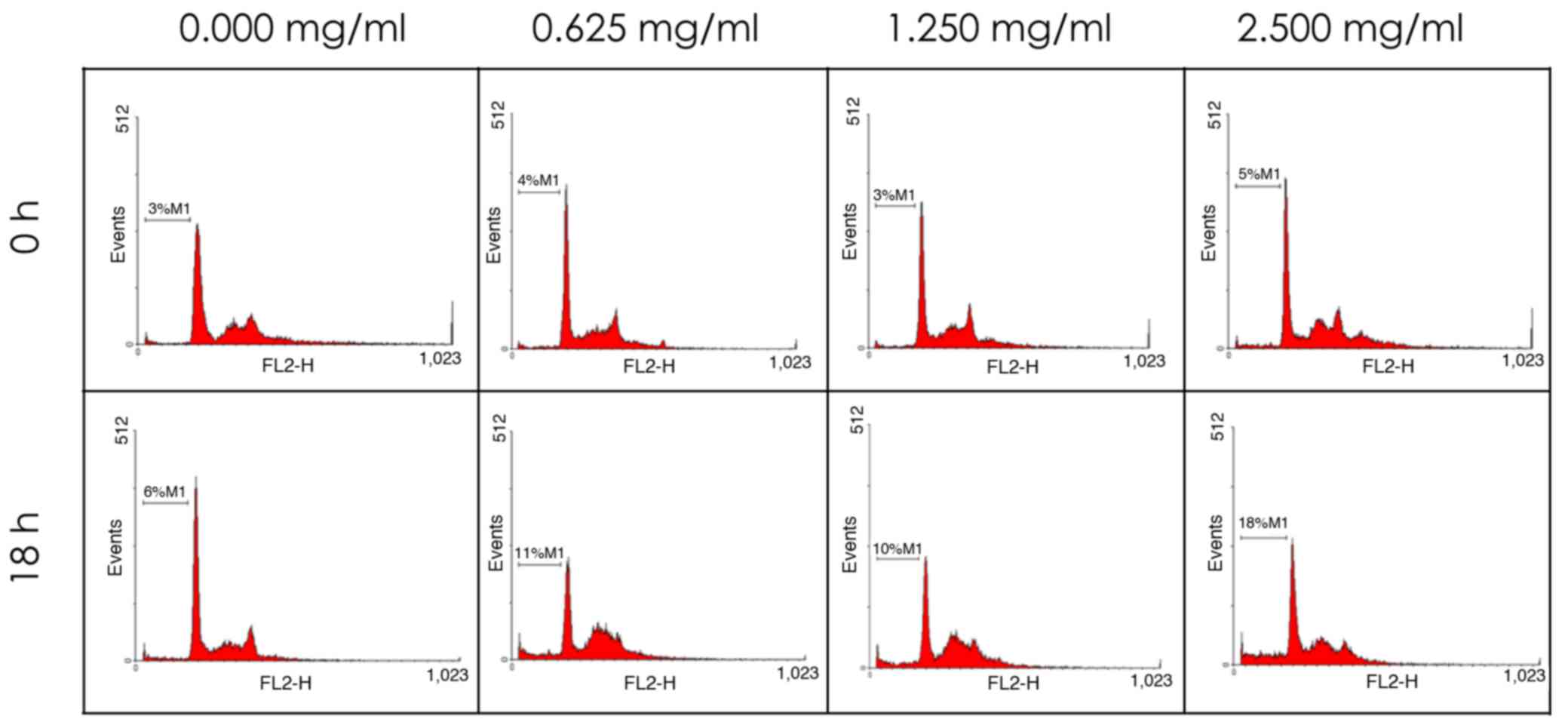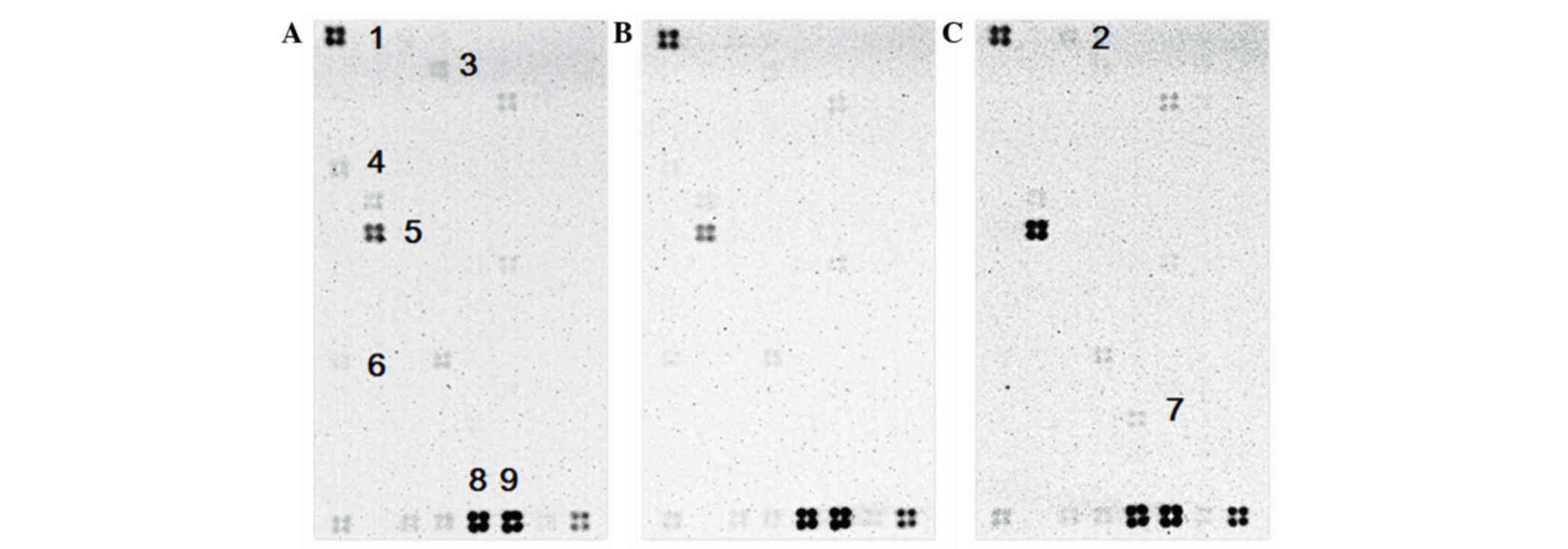|
1
|
Ferruzzi MG and Blakeslee J: Digestion,
absorption, and cancer preventative activity of dietary chlorophyll
derivatives. Nutr Res. 27:1–12. 2007. View Article : Google Scholar
|
|
2
|
Kelloff GJ, Boone CW, Crowell JA, Steele
VE, Lubet R and Sigman CC: Chemopreventive drug development:
Perspectives and progress. Cancer Epidemiol Biomarkers Prev.
3:85–98. 1994.PubMed/NCBI
|
|
3
|
Lee HS, Na MH and Kim WK: alpha-Lipoic
acid reduces matrix metalloproteinase activity in MDA-MB-231 human
breast cancer cells. Nutr Res. 30:403–409. 2010. View Article : Google Scholar : PubMed/NCBI
|
|
4
|
Sutandyo N: Nutritional carcinogenesis.
Acta Med Indones. 42:36–42. 2010.PubMed/NCBI
|
|
5
|
Howson CP, Hiyama T and Wynder EL: The
decline in gastric cancer: Epidemiology of an unplanned triumph.
Epidemiol Rev. 8:1–27. 1986. View Article : Google Scholar : PubMed/NCBI
|
|
6
|
Suruo T: Mechanisms of multidrug
resistance and implications for therapy. Jpn J Cancer Res.
79:285–296. 1988. View Article : Google Scholar : PubMed/NCBI
|
|
7
|
Thiebaut F, Tsuruo T, Hamada H, Gottesman
MM, Pastan I and Willingham MC: Cellular localization of the
multidrug- resistance gene product P-glycoprotein in normal human
tissues. Proc Natl Acad Sci USA. 84:pp. 7735–7738. 1987; View Article : Google Scholar : PubMed/NCBI
|
|
8
|
Woolley PV III, Kumar S, Monks TF and
Ortiz JE: Colon cancer as a model for resistance to antineoplastic
drugsMechanisms of Drug Resistance in Neoplastic Cells. Woolley PV
III and Tew KD: Academic Press Inc.; San Diego, CA: pp. 31988,
View Article : Google Scholar
|
|
9
|
Ikeda Y, Mori M, Adachi Y, Matsushima T,
Sugimachi K and Saku M: Carcinoembryonic antigen (CEA) in stage IV
gastric cancer as a risk factor for liver metastasis: A univariate
and multivariate analysis. J Surg Oncol. 53:235–238. 1993.
View Article : Google Scholar : PubMed/NCBI
|
|
10
|
Song EJ, Yang VC, Chiang CD and Chao CC:
Potentiation of growth inhibition due to vincristine by ascorbic
acid in a resistant human non-small cell lung cancer cell line. Eur
J Pharmacol. 292:119–125. 1995.PubMed/NCBI
|
|
11
|
Zhang D and Fan D: Multidrug resistance in
gastric cancer: Recent research advances and ongoing therapeutic
challenges. Expert Rev Anticancer Ther. 7:1369–1378. 2007.
View Article : Google Scholar : PubMed/NCBI
|
|
12
|
Graham S, Haughey B, Marshall J, Brasure
J, Zielezny M, Freudenheim J, West D, Nolan J and Wilkinson G: Diet
in the epidemiology of gastric cancer. Nutr Cancer. 13:19–34. 1990.
View Article : Google Scholar : PubMed/NCBI
|
|
13
|
Kono S and Hirohata T: Nutrition and
stomach cancer. Cancer Causes Control. 7:41–55. 1996. View Article : Google Scholar : PubMed/NCBI
|
|
14
|
Kelley JR and Duggan JM: Gastric cancer
epidemiology and risk factors. J Clin Epidemiol. 56:1–9. 2003.
View Article : Google Scholar : PubMed/NCBI
|
|
15
|
Parkin DM, Bray F, Ferlay J and Pisani P:
Global cancer statistics, 2002. CA Cancer J Clin. 55:74–108. 2005.
View Article : Google Scholar : PubMed/NCBI
|
|
16
|
Chijimatsu T, Tatsuguchi I, Oda H and
Mochizuki S: A Freshwater clam (Corbicula fluminea) extract reduces
cholesterol level and hepatic lipids in normal rats and
xenobiotics-induced hypercholesterolemic rats. J Agric Food Chem.
57:3108–3112. 2009. View Article : Google Scholar : PubMed/NCBI
|
|
17
|
Pan MH, Huang YT, Ho CT, Chang CI, Hsu PC
and Sun Pan B: Induction of apoptosis by Meretrix lusoria through
reactive oxygen species production, glutathione depletion, and
caspase activation in human leukemia cells. Life Sci. 79:1140–1152.
2006. View Article : Google Scholar : PubMed/NCBI
|
|
18
|
Sazimal I and Dangelo GB: The Asian
invasive freshwater clam Corbicula fluminea as prey of two native
waterbirds in South-Eastern Brazil. Folia Malacol. 21:293–295.
2013. View Article : Google Scholar
|
|
19
|
Sugita M, Nakae H, Yamamura T, Takamiya Y,
Itasaka O and Hori T: The occurrence of glycosphingolipids
containing mannose in the sea-water bivalve, Meretrix lusoria
(Hamaguri). J Biochem. 98:27–34. 1985. View Article : Google Scholar : PubMed/NCBI
|
|
20
|
Karnjanapratum S, Benjakul S, Kishimura H
and Tsai YH: Chemical compositions and nutritional value of Asian
hard clam (Meretrix lusoria) from the coast of Andaman Sea. Food
Chem. 141:4138–4145. 2013. View Article : Google Scholar : PubMed/NCBI
|
|
21
|
Kritchevsky D, Tepper SA, Ditullo NW and
Holmes WL: The sterols of seafood. J Food Sci. 32:64–66. 1967.
View Article : Google Scholar
|
|
22
|
Simopoulos AP: Omega-3 fatty acids in
health and disease and in growth and development. Am J Clin Nutr.
54:438–463. 1991.PubMed/NCBI
|
|
23
|
Sinclair AJ, Murphy KJ and Li D: Marine
lipids: Overview ‘news insights and lipid composition of Lyprinol’.
Allerg Immunol (Paris). 32:261–271. 2000.PubMed/NCBI
|
|
24
|
Bevans CG and Harris AL: Regulation of
connexin channels by pH. Direct action of the protonated form of
taurine and other aminosulfonates. J Biol Chem. 274:3711–3719.
1999. View Article : Google Scholar : PubMed/NCBI
|
|
25
|
Wu HC and Shiau CY: Proximate composition,
free amino acids and peptides contents in commercial chicken and
other meat essences. J Food Drug Anal. 10:170–177. 2002.
|
|
26
|
Hayes KC: Taurine requirement in primates.
Nutr Rev. 43:65–70. 1985. View Article : Google Scholar : PubMed/NCBI
|
|
27
|
Iritani N, Fukuda E and Inoguchi K: Effect
of feeding the shell fish (Corbicula japonica) on lipid metabolism
in the rat. Atherosclerosis. 34:41–47. 1979. View Article : Google Scholar : PubMed/NCBI
|
|
28
|
Kong ZL, Chiang LC, Fang F, Shinohara K
and Pan P: Immune bioactivity in shellfish toward serum-free
cultured human cell lines. Biosci Biotechnol Biochem. 61:24–28.
1997. View Article : Google Scholar : PubMed/NCBI
|
|
29
|
Tsai JS, Chen JL and Pan BS:
ACE-inhibitory peptides identified from the muscle protein
hydrolysate of hard clam (Meretrix lusoria). Process Biochem.
43:743–747. 2008. View Article : Google Scholar
|
|
30
|
Wijesekara I and Kim SK:
Angiotensin-I-converting enzyme (ACE) inhibitors from marine
resources: Prospects in the pharmaceutical industry. Mar Drugs.
8:1080–1093. 2010. View Article : Google Scholar : PubMed/NCBI
|
|
31
|
Martin KR: Targeting apoptosis with
dietary bioactive agents. Exp Biol Med (Maywood). 231:117–129.
2006.PubMed/NCBI
|
|
32
|
Häkkinen SH, Kärenlampi SO, Heinonen IM,
Mykkänen HM and Törrönen AR: HPLC method for screening of
flavonoids and phenolic acids in berries. J Sci Food Agric.
77:543–551. 1998. View Article : Google Scholar
|
|
33
|
Mosmann T: Rapid colorimetric assay for
cellular growth and survival: Application to proliferation and
cytotoxicity assays. J Immunol Methods. 65:55–63. 1983. View Article : Google Scholar : PubMed/NCBI
|
|
34
|
Huang YT, Huang YH, Hour TC, Pan BS, Liu
YC and Pan MH: Apoptosis-inducing active components from Corbicula
fluminea through activation of caspase-2 and production of reactive
oxygen species in human leukemia HL-60 cells. Food Chem Toxicol.
44:1261–1272. 2006. View Article : Google Scholar : PubMed/NCBI
|
|
35
|
Sun SY, Hail N Jr and Lotan R: Apoptosis
as a novel target for cancer chemoprevention. J Natl Cancer Inst.
96:662–672. 2004. View Article : Google Scholar : PubMed/NCBI
|
|
36
|
Zhang Y, Zhang QH, Wu LJ, Tashiro S,
Onodera S and Ikejima T: Atypical apoptosis in L929 cells induced
by evodiamine isolated from Evodia rutaecarpa. J Asian Nat Prod
Res. 6:19–27. 2004. View Article : Google Scholar : PubMed/NCBI
|
|
37
|
Ambrosini G, Adida C and Altieri DC: A
novel anti-apoptosis gene, survivin, expressed in cancer and
lymphoma. Nat Med. 3:917–921. 1997. View Article : Google Scholar : PubMed/NCBI
|
|
38
|
Zaffaroni N, Pennati M, Colella G, Perego
P, Supino R, Gatti L, Pilotti S, Zunino F and Daidone MG:
Expression of the anti-apoptotic gene survivin correlates with
taxol resistance in human ovarian cancer. Cell Mol Life Sci.
59:1406–1412. 2002. View Article : Google Scholar : PubMed/NCBI
|
|
39
|
Pozarowski P, Halicka DH and Darzynkiewicz
Z: NF-kappaB inhibitor sesquiterpene parthenolide induces
concurrently atypical apoptosis and cell necrosis: Difficulties in
identification of dead cells in such cultures. Cytometry A.
54:118–124. 2003. View Article : Google Scholar : PubMed/NCBI
|
|
40
|
Hart LS, Ornelles D and Koumenis C: The
adenoviral E4orf6 protein induces atypical apoptosis in response to
DNA damage. J Biol Chem. 282:6061–6067. 2007. View Article : Google Scholar : PubMed/NCBI
|
|
41
|
Hamada M, Nishio K, Doe M, Usuki Y and
Tanaka T: Farnesylpyridinium, an analog of isoprenoid farnesol,
induces apoptosis but suppresses apoptotic body formation in human
promyelocytic leukemia cells. FEBS Lett. 514:250–254. 2002.
View Article : Google Scholar : PubMed/NCBI
|
|
42
|
Shiokawa D, Maruta H and Tanuma S:
Inhibitors of poly(ADP-ribose) polymerase suppress nuclear
fragmentation and apoptotic-body formation during apoptosis in
HL-60 cells. FEBS Lett. 413:99–103. 1997. View Article : Google Scholar : PubMed/NCBI
|
|
43
|
Son M, Kim HK, Kim WB, Yang J and Kim BK:
Protective effect of taurine on indomethacin-induced gastric
mucosal injury. Adv Exp Med Biol. 403:147–155. 1996. View Article : Google Scholar : PubMed/NCBI
|
|
44
|
Scioscia KA, Snyderman CH and Wagner R:
Altered serum amino acid profiles in head and neck cancer. Nutr
Cancer. 30:144–147. 1998. View Article : Google Scholar : PubMed/NCBI
|
|
45
|
Vecer J, Kvapil M, Sprongl L, Kubátová H,
Hoch J, Jech Z and Charvát J: Tissue amino acids in patients with
colorectal carcinoma. Vnitr Lek. 44:192–194. 1998.(In Czech).
PubMed/NCBI
|
|
46
|
You JS and Chang KJ: Taurine protects the
liver against lipid peroxidation and membrane disintegration during
rat hepatocarcinogenesis. Adv Exp Med Biol. 442:105–112. 1998.
View Article : Google Scholar : PubMed/NCBI
|
|
47
|
Klamt F and Shacter E: Taurine chloramine,
an oxidant derived from neutrophils, induces apoptosis in human B
lymphoma cells through mitochondrial damage. J Biol Chem.
280:21346–21352. 2005. View Article : Google Scholar : PubMed/NCBI
|
|
48
|
Opstad KS, Bell BA, Griffiths JR and Howe
FA: Taurine: A potential marker of apoptosis in gliomas. Br J
Cancer. 100:789–794. 2009. View Article : Google Scholar : PubMed/NCBI
|
|
49
|
Xu XF, Cai BL, Guan SM, Li Y, Wu JZ, Wang
Y and Liu B: Baicalin induces human mucoepidermoid carcinoma Mc3
cells apoptosis in vitro and in vivo. Invest New Drugs. 29:637–645.
2011. View Article : Google Scholar : PubMed/NCBI
|
|
50
|
Decesse JT, Medjkane S, Datto MB and
Crémisi CE: RB regulates transcription of the p21/WAF1/CIP1 gene.
Oncogene. 20:962–971. 2001. View Article : Google Scholar : PubMed/NCBI
|
|
51
|
Carreira S, Goodall J, Aksan I, La Rocca
SA, Galibert MD, Denat L, Larue L and Goding CR: Mitf cooperates
with Rb1 and activates p21Cip1 expression to regulate cell cycle
progression. Nature. 433:764–769. 2005. View Article : Google Scholar : PubMed/NCBI
|
|
52
|
Cayrol C, Knibiehler M and Ducommun B: p21
binding to PCNA causes G1 and G2 cell cycle arrest in p53-deficient
cells. Oncogene. 16:311–320. 1998. View Article : Google Scholar : PubMed/NCBI
|
|
53
|
Harper JW, Adami GR, Wei N, Keyomarsi K
and Elledge SJ: The p21 Cdk-interacting protein Cip1 is a potent
inhibitor of G1 cyclin-dependent kinases. Cell. 75:805–816. 1993.
View Article : Google Scholar : PubMed/NCBI
|
|
54
|
Padua MB and Hansen PJ: Changes in
expression of cell-cycle-related genes in PC-3 prostate cancer
cells caused by ovine uterine serpin. J Cell Biochem.
107:1182–1188. 2009. View Article : Google Scholar : PubMed/NCBI
|
|
55
|
Löhr K, Möritz C, Contente A and
Dobbelstein M: p21/CDKN1A mediates negative regulation of
transcription by p53. J Biol Chem. 278:32507–32516. 2003.
View Article : Google Scholar : PubMed/NCBI
|
|
56
|
Baker DJ, Dawlaty MM, Galardy P and van
Deursen JM: Mitotic regulation of the anaphase-promoting complex.
Cell Mol Life Sci. 64:589–600. 2007. View Article : Google Scholar : PubMed/NCBI
|
|
57
|
Harper JW, Burton JL and Solomon MJ: The
anaphase-promoting complex: It's not just for mitosis any more.
Genes Dev. 16:2179–2206. 2002. View Article : Google Scholar : PubMed/NCBI
|
|
58
|
Kidokoro T, Tanikawa C, Furukawa Y,
Katagiri T, Nakamura Y and Matsuda K: CDC20, a potential cancer
therapeutic target, is negatively regulated by p53. Oncogene.
27:1562–1571. 2008. View Article : Google Scholar : PubMed/NCBI
|
|
59
|
Heilman DW, Teodoro JG and Green MR:
Apoptin nucleocytoplasmic shuttling is required for cell
type-specific localization, apoptosis, and recruitment of the
anaphase-promoting complex/cyclosome to PML bodies. J Virol.
80:7535–7545. 2006. View Article : Google Scholar : PubMed/NCBI
|
|
60
|
Mo M, Fleming SB and Mercer AA: Cell cycle
deregulation by a poxvirus partial mimic of anaphase-promoting
complex subunit 11. Proc Natl Acad Sci USA. 106:pp. 19527–19532.
2009; View Article : Google Scholar : PubMed/NCBI
|
|
61
|
Morgan D, Eley L, Sayer J, Strachan T,
Yates LM, Craighead AS and Goodship JA: Expression analyses and
interaction with the anaphase promoting complex protein Apc2
suggest a role for inversin in primary cilia and involvement in the
cell cycle. Hum Mol Genet. 11:3345–3350. 2002. View Article : Google Scholar : PubMed/NCBI
|
|
62
|
Wirth KG, Ricci R, Giménez-Abián JF,
Taghybeeglu S, Kudo NR, Jochum W, Vasseur-Cognet M and Nasmyth K:
Loss of the anaphase-promoting complex in quiescent cells causes
unscheduled hepatocyte proliferation. Genes Dev. 18:88–98. 2004.
View Article : Google Scholar : PubMed/NCBI
|



